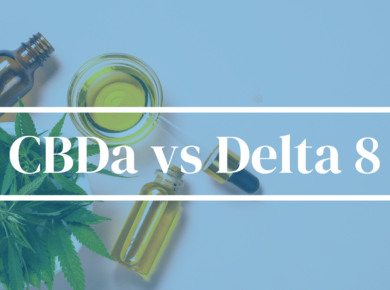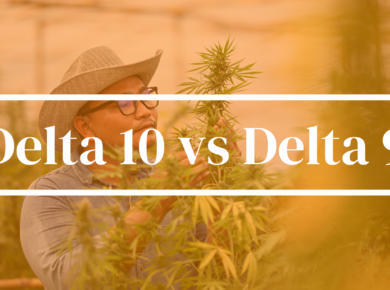CBDa (Cannabidiolic Acid) and THCa (Tetrahydrocannabinolic Acid) are both integral compounds found in hemp and cannabis. Although they share similarities in their natural occurrence, their properties and subsequent transformations set them apart.
CBDa, often simply denoted as the precursor to CBD, is abundant in raw hemp or cannabis. Upon exposure to elements like heat or sunlight, it undergoes decarboxylation, leading to the formation of CBD (Cannabidiol). The salient feature of CBD is its non-psychoactive nature, ensuring no “high” effects.
In contrast, THCa stands as the gateway to THC (Tetrahydrocannabinol), the predominant psychoactive component in cannabis. Much like CBDa, THCa morphs into THC when subjected to decarboxylation via heat or sunlight.
The crux of the distinction between CBDa and THCa centers on their end products: CBD and THC. While CBD is applauded for potential wellness attributes, THC is primarily known for its psychoactive prowess. Nevertheless, it’s paramount to grasp that in their raw forms, both CBDa and THCa are non-psychoactive.
Bear in mind that this exposition is rooted in scientific exploration and does not venture into medical claims or therapeutic benefits.
Many States allow hemp derived cannabinoids under the 2018 Farm Bill as long as they contain less than .3% D9 THC. Some States have explicitly banned cannabinoids like Delta 8, so check your local rules and regulation before purchasing.
Here’s the rules for Kush.com and more details
Frequently Asked Questions (FAQs)
What Exactly Are CBDa and THCa? CBDa and THCa are intrinsic compounds in raw cannabis. Acting as precursors, CBDa evolves into CBD while THCa develops into THC upon undergoing decarboxylation.
How Do CBDa and THCa Impact Our System? While steering clear of medical claims, it’s imperative to highlight that neither CBDa nor THCa is psychoactive. Their interaction with the endocannabinoid system varies, potentially leading to diverse experiences upon consumption.
Are CBDa and THCa Present in Hemp? Indeed, both compounds grace the composition of hemp. Typically, hemp boasts a higher concentration of CBDa juxtaposed with a modest presence of THCa, adhering to the legal mandate of less than 0.3% THC.
How Can One Consume CBDa and THCa? A medley of consumption avenues exists, ranging from raw cannabis products like juices and tinctures to specific edible varieties.
What Transformation Do CBDa and THCa Undergo Upon Heating? Decarboxylation is the transformative process, wherein CBDa metamorphoses into CBD, and THCa evolves into THC. These transformed compounds exhibit altered properties and effects compared to their acidic antecedents.
Shop
Similar Product Searches You Might Be Interested In:





